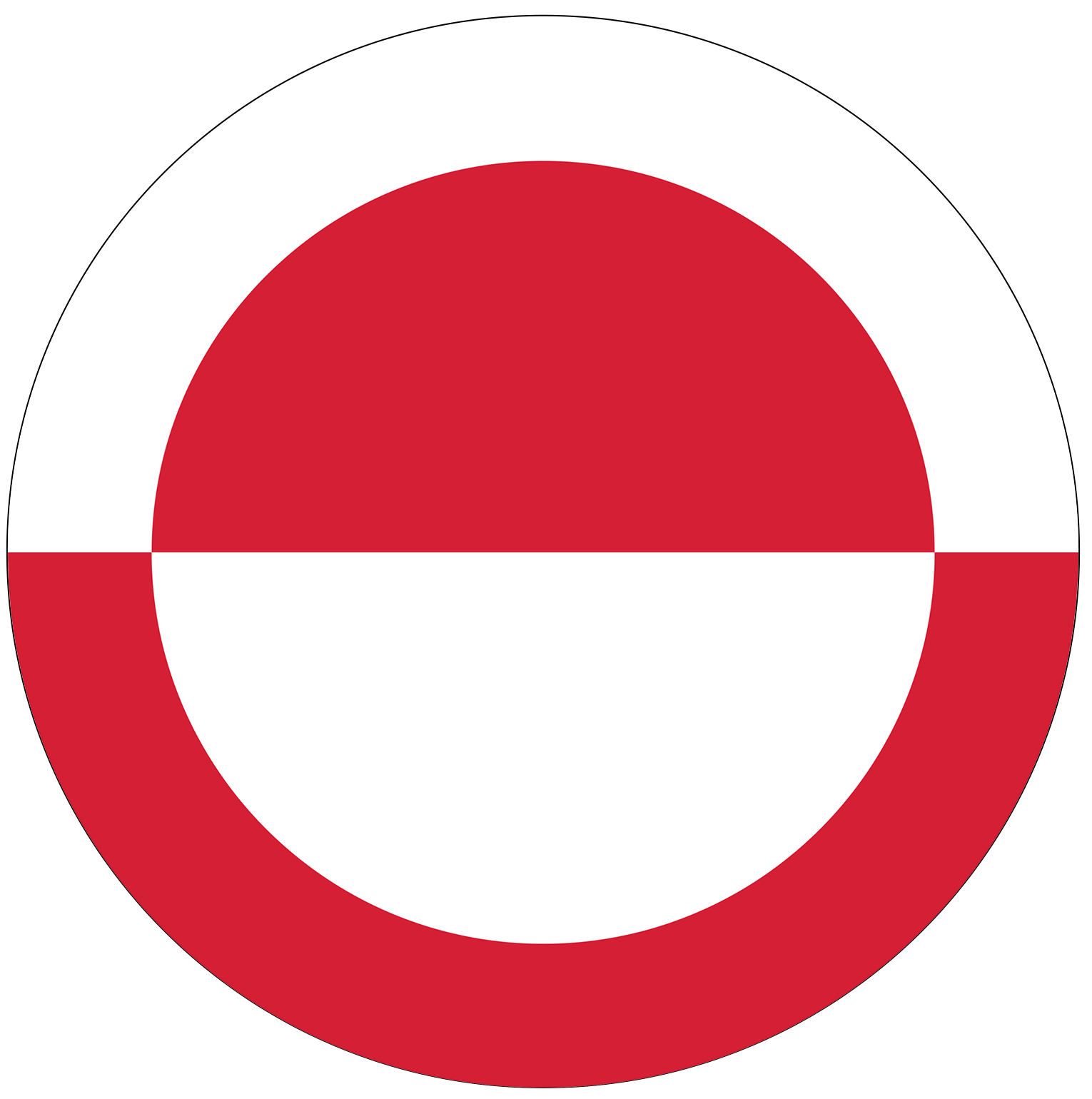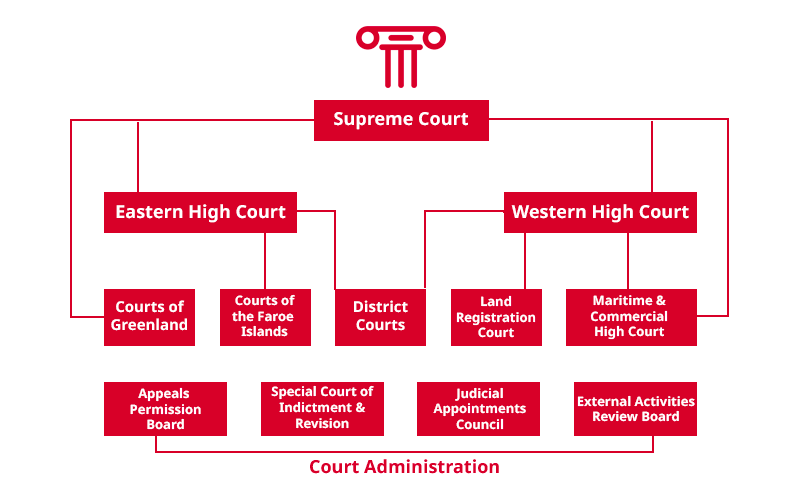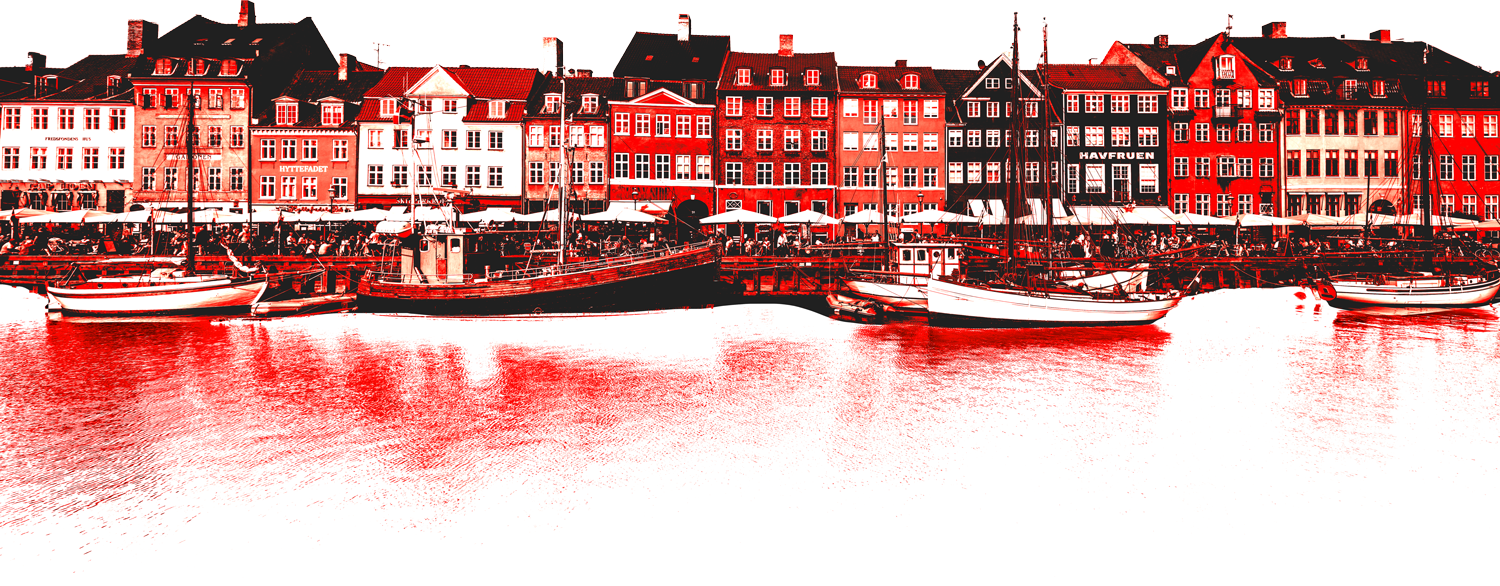Denmark, a peninsula and an archipelago of over 400 islands in Scandinavia, is a constitutional monarchy with a democratic government. The region’s earliest inhabitants, traced to 10,000 BCE, were nomadic hunters whose 8th century Viking descendants were shipbuilders, sailors, traders, and raiders. The Vikings engaged with or occupied parts of Europe, Russia, Ukraine, Turkey and North America for over two-hundred years. By the mid-11th century, Christianity spread, and the monarchy and central government consolidated power. The kingdoms of Denmark, Sweden, Norway, and Iceland united in the late 14th century in the Kalmar Union. By the 19th century, each established an independent nation.
Denmark joined the League of Nations in 1920 and declared neutrality when World War II began. Despite a non-aggression pact, German troops crossed the Danish border in 1940 and occupied the country. After the war, Denmark’s government pursued a policy of internationalization, joined the European Economic Community and later the EU, UN, and NATO.

Greenland, the world’s largest island, is part of the Kingdom of Denmark. Its population of 56,000 is mostly Inuit and Inuit/Danish. Greenland has home-rule over its domestic affairs but cooperates with Denmark on matters of foreign policy and security. The Faroe Islands, a group of islands in the North Atlantic Ocean between Iceland and the Shetland Islands, is also a self-governing administrative division of Denmark.
Denmark’s monarchy has been mostly ceremonial since the Danish constitution was enacted in 1849. The Danish Constitution is the supreme law of the Kingdom of Denmark, which includes Denmark, the Faroe Islands, and Greenland. Both the Faroe Islands and Greenland enjoy a high degree of autonomy and have their own judicial systems. However, decisions made in the highest courts of the Faroe Islands and Greenland may be appealed to the Danish High Courts and Supreme Court. Together, the Kingdom of Denmark comprises the 12th largest territory in the world.

Legal System
Denmark has a civil law system with roots in Germanic law, like its Scandinavian neighbors Norway and Sweden. Consequently, Denmark is mostly regulated by codes, although case law is also used to establish legal precedents. Recently, Denmark has seen a shift in which case law is becoming more important, with judges providing more in-depth explanations and opinions. The evolution of Danish court rulings, especially in the Supreme Court, has seen a transition from brief and absent explanations in its early years to more detailed and reader-friendly justifications in recent times. Initially, court rulings lacked substantial explanations, with an official ban on such explanations in 1674. However, demands for explanations gradually emerged and were eventually enshrined in law in 1856. Notably, after 2007 when the Supreme Court gained a precedent-setting status, there was a concerted effort to craft more comprehensive and comprehensible explanations, particularly in cases outlining significant legal principles.

Denmark’s Relationship with the European Union
As an EU member, Denmark must adhere to EU laws. EU laws take precedence over Danish laws in case of conflict, according to the EU Court of Justice. The EU is limited to legislating in agreed-upon areas, and Denmark has transferred sovereignty to the EU in various cases, like immigration and consumer rights, allowing EU laws to apply immediately in Denmark. There is an ongoing debate about the extent of Denmark's obligation to follow EU rules, as the Danish Constitution prohibits granting the EU the right to introduce laws in areas where the state itself would lack the authority to implement law. However, while the Danish Supreme Court permits disregarding EU law in conflict with the Constitution, the EU Court of Justice insists on EU rules taking precedence. Moreover, Denmark's ability to reclaim sovereignty from the EU is allowed under Danish constitutional law but considered illegal under EU law. Thus, the precise relationship between Danish Law and EU Law is difficult to determine and is evolving.
Judiciary
The court system in Denmark consists of 24 district courts spread throughout the country, two high courts, and the Supreme Court. There are also two specialized courts: the Maritime and Commercial High Court and the Land Registration Court. Denmark follows the two-court rule, which means that a decision made in a district court may always be appealed to a high court, and a case that began in a high court can always be appealed to the Supreme Court. Whether a case initiates in a district court or a high court is determined by the laws governing the specific case. Typically, cases begin in a district court.


The Appeals Permission Board
When a case starts in a district court and is later sought to be appealed from a high court to the Supreme Court—a third appeal—the Appeals Permission Board must first approve it. The Appeals Permission Board looks to whether the case is a significant matter. The Appeals Permission Board is composed of a supreme court judge, a high court judge, a district court judge, a lawyer, and a law school professor. Consequently, the judges sitting on the Supreme Court frequently do not determine which cases they hear.

The Supreme Court
The Supreme Court is made up of 18 judges rotating between two chambers, both hearing different cases simultaneously. Normally, there are five judges hearing each case, but high-profile cases usually are heard by seven or more judges. To keep a sense of unity, the judges rotate between the two chambers. Furthermore, one supreme court judge is always on leave while sitting on the Court of Justice of the European Union.
The President of the Supreme Court is appointed by the Court’s judges.
Judicial Review
While Denmark's constitution does not explicitly grant the courts the power of judicial review, the Supreme Court has, over recent years, established a practice of reviewing laws to ensure they comply with the constitution. This shift was exemplified in the Tvind case in 1999. The Danish Parliament made a legislative decision that, in practice, resolved a legal dispute. The Supreme Court ruled that it, not the Danish Parliament, was the correct government organ to resolve legal disputes, as the role of the Supreme Court was to protect constitutional principles. By legislating on this matter, Parliament inappropriately assumed the role of a court. The Supreme Court’s ruling was well received by the public and even by Parliament. Today, Danish citizens and organizations can bring cases to court challenging the constitutionality of laws if they feel they impinge upon liberties guaranteed in the constitution.
The Judicial Career
Denmark has roughly 375 appointed judges, consisting of district court judges, high court judges, and Supreme Court judges. Additionally, there are temporary judges who fill in for judges who are sick or on leave as well as judicial trainees who work in various legal capacities. The legal system also employs a large administration of staff members. In cases where there is no dispute, administrative staff can handle matters in the enforcement and probate courts without any need for legal expertise.
Becoming a judge in Denmark involves several key steps. First, an aspiring judge must obtain a law degree and gain several years of professional experience. Often, this means working as a judicial trainee in a district court where they undergo training in handling legal cases. However, it is not a requirement that the candidate work as a judicial trainee to become a judge. The current president of the Supreme Court, for example, was a law professor before taking up the role of Supreme Court judge.
Before being appointed as a judge, all candidates go through a temporary appointment in a high court for 9-10 months during which they work as judges alongside experienced counterparts to receive feedback and training. To apply for a permanent judge position, candidates must provide their assessment from this period and submit it to the Judicial Appointments Council.

Judicial Selection
The Judicial Appointment Council nominates judges in Denmark. The Council selects one candidate and sends their choice to the Minister of Justice, who makes the final decision on whether the candidate should be allowed to serve as a judge. It is the norm for the Minister of Justice to approve the candidate nominated by the Council, effectively leaving the choice of judicial nominations to the Council.
The Council has six members: one Supreme Court judge who serves as chairman, one high court judge, one district court judge, and two, non-legally trained representatives of the public—one appointed by the Association of Danish Municipalities and one appointed by the Danish Council for Civic Education. Its judicial members are appointed by the Minister of Justice upon the recommendation of the Supreme Court, the high courts, and the Association of Judges. Members serve a single four-year term.

Judicial Tenure
A judge in Denmark may serve in court until the retirement age of 70 but may voluntarily retire at the age of 65. Judges in Danish courts may only be removed from office by a judgment of the Special Complaint Court, a small, specialized court assembled with the same composition as the Appeals Permission Board. By reviewing complaints, the Special Complaint Court determines whether the judge being reviewed has acted inappropriately. Most cases against judges relate to minor infractions and do not result in dismissal.
Court Proceedings

Civil Proceedings
In civil proceedings, cases are typically overseen by a single judge in the district courts, three judges in the high courts, and a minimum of five judges in the Supreme Court. However, in commercial cases heard in the Maritime and Commercial High Court, the assigned judge is usually supported by two specialized lay judges who do not have legal training, but instead have expertise in different fields of commerce. This enables the court to gain insight and understanding into both the relevant area of business as well as the rules and customs of particular industries.

Criminal Proceedings
Like civil proceedings, the number of judges hearing a criminal case increases with the level of the court. Criminal cases where the prosecutor requests a sentence involving incarceration under four years are typically overseen by a single judge and two lay judges. Lay judges in criminal matters are non-legally trained citizens. When deciding a case, the judge has a single vote and the lay judges each have a single vote as well. The majority rules, and in case of a tie, the court will rule in favor of the defendant. Lay judges are also involved in the sentencing process.
In more serious criminal cases that require incarceration of four or more years - such as those involving murder, arson, rape, or aggravated battery - the court is composed of three judges and six jury members in the district courts, and nine jury members and three judges in the high courts. Each jury member has a single vote that carries the same weight as the vote of a judge. A conviction requires a majority vote.
Lay judges and jury members in Denmark are selected from a list created by municipalities; in many municipalities, prospective lay judges must declare their interest in the position. To be eligible, individuals must be under 80 years of age, be eligible to vote, and not be a member of law enforcement, the judiciary, corrections, or clergy. Lay judges usually serve 2 – 4 times a year.
Access to Justice
Denmark has a program called ‘Free Process,’ which is a cornerstone of Denmark's legal system in civil law. This program offers eligible individuals the opportunity to navigate legal proceedings without the burden of financial constraints. By covering legal expenses, including lawyer fees and associated costs, Free Process enables those meeting specific income criteria to pursue legal recourse on an equal footing to those who can afford legal expenses. The bill for those eligible for Free Process is paid by the government, even if the case is lost.
Another critical support system within Denmark's legal landscape is the Public Legal Aid program, which offers financial and legal assistance to individuals in need. Eligible citizens have the right to receive basic, free oral advice from a lawyer regarding both the legal aspects of their case as well as practical and financial options for proceeding with the case. This applies to all legal areas, but it is most commonly used for personal legal matters such as divorce, child custody, renting a home, real estate, inheritance issues, and compensation. Lawyers at the Legal Aid Centers throughout the country provide this free oral advice locally and in person.
The Legal Profession
A typical legal education in Denmark consists of a three-year bachelor's degree in law followed by a two-year master’s degree in law. Entrance to study law is based solely on students' high school GPA. Ordinarily, a high average is required. Law school graduates who aspire to become attorneys must first complete a three-year apprenticeship working under the supervision of a licensed attorney. By the end of the apprenticeship the aspiring lawyer must also pass a written exam and a trial exam. Upon completion of these requirements, and other formalities, the apprentice is admitted to the bar and may begin practicing as an attorney.

